Comments:"Why do professional photographers charge so much? | Model Mayhem Education Blog"
This article is written by a member of our expert community. It expresses that member’s views only. We welcome other perspectives. Here’s how to contribute to MM EDU.
This question presents itself all the time, and I’d like to try to shed some light on the subject (pun totally intended).
So… let’s begin.
As with any other job, we get paid for our time—but not just the time behind the camera. Truth be told, that’s only a third or so of what we put into a shoot. You have to consider that a shoot of three to four looks can take anywhere from 2 to 10 hours, depending on stylists, makeup artists, travel time to different locations, and so on.
That’s not considering the time we put in before and after the shoot—which we will address in a minute.
Let’s say, for example, you are paying $500 for a shoot where you get four looks, no stylist, no MUA. Just you and what you bring.
Five hundred dollars and 5 hours of shooting (just to keep our math simple), works out to be $100 per hour. Not a bad gig, right? Right—kinda. It would be stellar if our work began and ended with the shoot.
Before the shoot, a photographer may spend 20 minutes planning out locations, or he may spend a couple of hours. If you’ve met with the photographer beforehand to discuss the shoot, factor that in as well. Let’s keep it simple again and say that you and the photographer meet for an hour (in person or on the phone) to discuss outfits and the general plan for what you two will set out to create. You are going to shoot in the studio, so there are no locations to plan out.
Now we’re at six hours of work for a five-hour shoot.
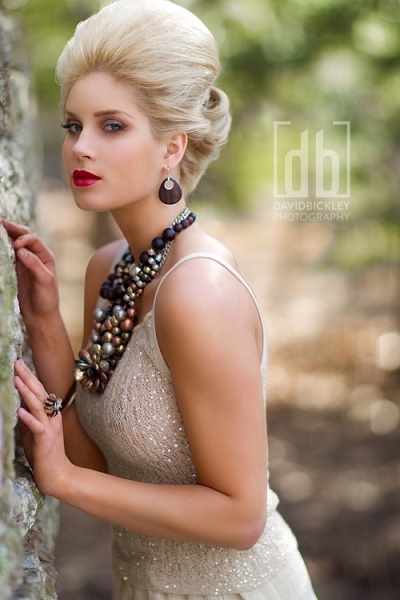
This photo was part of an 8 hour session with a makeup artist, hair stylist and wardrobe stylist. After the session another 4 hours were spent in post production to get the image ready for print.
After the session, we have to go through the images and not only select the best out of hundreds of shots, but also edit them. Editing doesn’t always consist of spot-removing blemishes, often times it is more about alterations in color and exposure of the shot. Those things are vital. I will say things like “basic edits” throughout this article and when I do I’m generally referring to things like proper retouching techniques that preserve image integrity not a system of plugins or actions. Automated systems of image manipulation often leave damage that render the file unusable for high-end commercial work. Proper basic retouching does take longer and there aren’t many good shortcuts. We won’t even address the advanced methods, I don’t believe there is an accurate way to break down the time involved.
That said, I usually spend at least another 4-5 hours selecting and performing basic edits. So again, to keep things simple, let’s say five more hours of work.
Now we are at 11 hours of work for a shoot that took half as long. This brings the rate down to about $45.50 per hour. That is still a nice paycheck but definitely a hefty cut.
Now let’s consider the fee the photographer has to pay for the studio that you get to enjoy the comforts of. For the rent and utilities in a small office, $1,500 per month is a generously low statement. At that rate, in an average month of 30 days, it would cost $50 per 8-hour day just to open the door of the studio. That takes out another $6.25 per hour, putting us at $39.25.
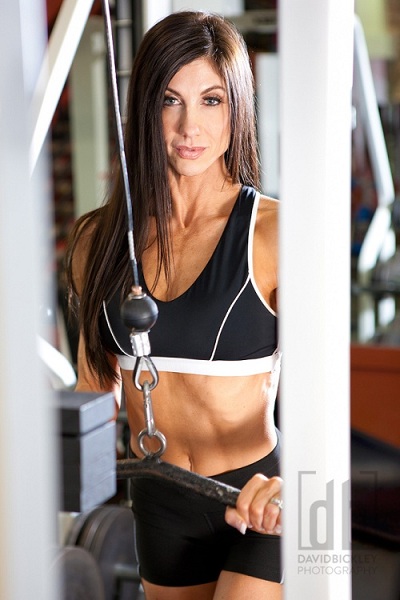
This photo was from a 2 hour session. After the session it took an hour to select the best images, and another 30 minutes to retouch this shot.
Basically, the photographer has made $450 and given up 11 hours of his day. But wait, he had to hire an assistant for 5 hours at $10 per hour. Make that $400. If we work that out really quickly, we see that $400 for 11 hours of work drops our rate down to just under $30 per hour. We can plug that into a standard 40-hour workweek over the course of a full year, and it brings us to an annual salary of $62,400.
At first glance, it seems like a lot. Honestly it is… before self-employment tax, health insurance, liability insurance, and equipment insurance. In 2011, the self-employment tax is 13.3%. That instantly takes $62,400 down to $54,100. Nearly a $10,000 hit just for being our own boss!
Taxes and general business expenses are well beyond the intention of this post—so let’s end there with them.
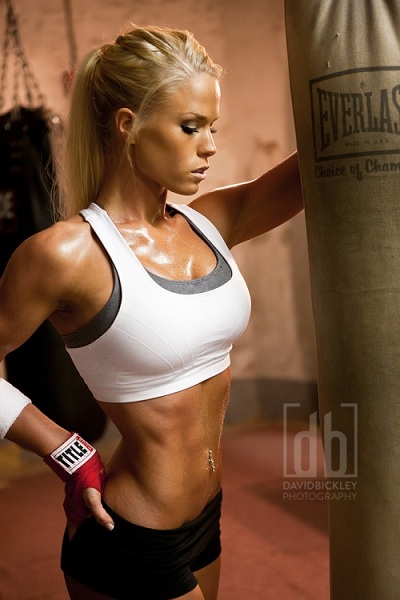
This photo was from another 2 hour session. It took at least 4 hours to scout and secure this location before the shoot, and an additional 2 after the shoot to select, retouch and upload to the client.
A lot of photographers will justify the cost of a shoot by the expense of their equipment. I’ve seen comments like this:
“How much a photographer spends on the equipment he or she uses to shoot the model should not affect how much you charge a model. It is not our fault you spend so much on your equipment.”
I guess in a way you are right. However, you are most certainly benefiting from the expenditure. After all, my main camera alone cost near $8,000 without the lenses. Without the camera, we would both just be looking at each other for a few hours. The quality of the equipment with which you are being photographed does matter. If the photographer is shooting you with a 6-year-old base model digital SLR like the Digital Rebel and a kit lens, you are going to get a good photo that will work pretty well for an 8 x 10 or a comp card. But the photographer most likely will not be able to submit your images to any publications, stock agencies, ad agencies, etc. The demand for high-resolution, high-quality images is simply too great today to be able to get away with less.
If the photographer is using a mid- to pro-level camera and top-quality glass, the game changes. Suddenly, that image can go anywhere it needs to, and you don’t need to be concerned about quality or usability in various media.
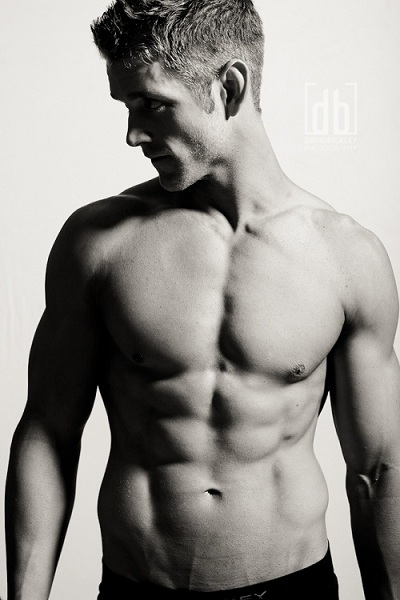
30 minutes to set up the lighting, 15 minutes to get the right shot, 20 minutes for retouching.
Yes, of course, the costs of doing business and the upgraded equipment are all a factor in what the professional photographer will charge. However, what you are really paying for are the years of practice it takes to make the images that you receive possible. Not to mention the sheer talent that many photographers bring to the table. Creativity has value. We are the best at what we do, and we charge what we deserve to make.
Sometimes there are no large expenses on a shoot. Sometimes you don’t use anything but a camera and the sun. No assistants. No stylists. Shoots like that will definitely affect where the photographer allocates funds in their business, but it’s unlikely that it will affect the bottom line. In fact on a commercial invoice those items are usually billed separately from the photographer’s fee.
Now let’s address the amount of photos you get back from the shoot. A 3-to-4-look shoot generally nets about fifteen good photos, five great ones. That really is not many, I know. This is where the model really needs to give up and trust the photographer. People make mistakes. Maybe in one shot the model was not quite right in his pose, or maybe the photographer didn’t get the angle he was looking for. Either way, you are building a portfolio and should include only the best options.
“Why not give me a CD and let me choose the photos I want to use?”
Good question. YOU are the one in the photos, and everyone is overly critical of himself. Often, other people will have an open and unbiased opinion of what looks good and what does not, not to mention the fact that established photographers already know what the agencies are looking for because they have probably worked with them before. The photographer’s choices give you an advantage because now you have the best shots—already geared towards the agencies you are hoping to reach.

20 minutes to build the set, 30 minutes to set up the lighting, 1 hour shooting, 1 hour retouching.
“I already paid for the shoot. Now I have to pay for prints?”
Absolutely, unless it was a TFP shoot. Prints cost us to produce, which results in a cost to the model.
“What is TFP?”
I still don’t see what the big mystery is about this. TFP means “time for prints.” The photographer gets your time, and you get a set number of prints. The photographer’s payment is the fact that you came; your payment is some photos. TFP is usually used only by people just starting out; however, some photographers will consider TFP based on the model’s potential or a concept they want to create and need volunteers for.
Personally, the only time I do TFP is when someone has an idea that inspires me. I do not pay models for their time. They have more to gain than I do at this point. I realize that sounds arrogant, but it is true. An established photographer is already making a living, as is an established model. There has to be a very good reason to give out time for free when I can be paying my bills instead. Generally speaking, the photographers who offer you a CD of your shoot free-of-charge have not been in this business very long. You each need the help of the other party.
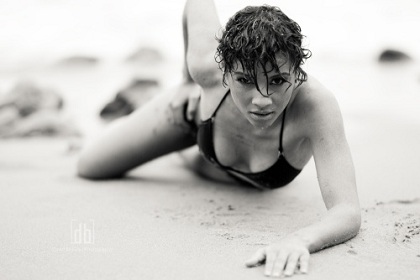
Not including the flight to California, this shot took 8 hours to scout for before the shoot. 2 hours of shooting and about 30-40 minutes for basic retouching.
Having worked both sides of this industry, I know that sometimes it does not seem to make sense. Ask yourself this though: If Michelangelo painted a portrait of you, would you question why the price of the piece is so high? No – because no one else could paint like him, and as the saying goes: “you get what you pay for.” Of course we have expenses and those are often far higher than what people expect. Yes, they do play a role in what we charge, but in the end you are paying the photographer because of their visual style and what they can do for your career.
The images you take for your portfolio are an investment in your future as a model. If you are serious about modeling, then it is time to start looking at it like a business. You are the product, and you need amazing images to sell that product to its fullest potential. The bottom line is that regardless of what we charge, if you don’t have enough faith in yourself to invest in your dream, why would anyone else?
David Bickley is an internationally published photographer specializing in portraiture and fitness photography. He is based in Kansas City, KS and has been shooting professionally for 8 years.http://www.davidbickley.com/